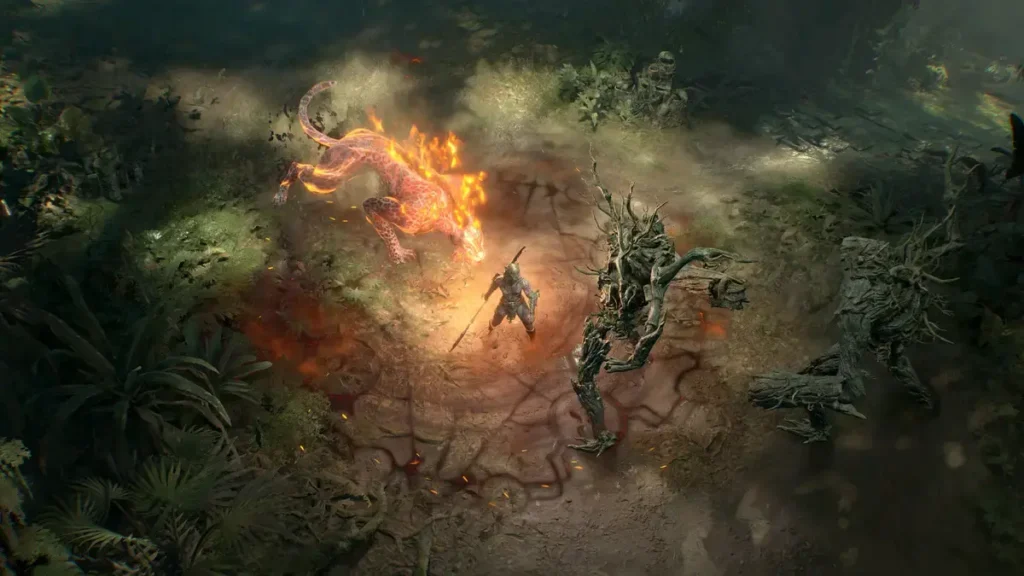In Diablo 4, there are eight difficulty levels as of the Vessel of Hatred expansion: four levels of traditional difficulty and four levels of even more challenging “Torment.”
These levels are used to help players get their experience tailored to them based on skill, gear, and progression, with higher difficulty rewarded with more reward.
In this guide, we will learn about the different difficulties, how to unlock them and which one suits you the best, and how to change difficulty levels in Diablo 4 Journey.
Standard Difficulty Levels
- Normal: A reasonable base level for both new players and veterans, no enemy power multipliers make this one simple. If you like to blitz through the campaign, especially the Vessel of Hatred expansion, then it’s often recommended.
- Hard: Hard mode sets enemies at a higher reward power and grants it 75% more experience and gold for experienced players. Obviously, level for leveling, but if you’re much too slow on Normal, it’ll be more efficient on Easy or Hard.
- Expert: Expert mode is unlocked after the prologue and only for those players who have gotten quite some legendary items. Enemies are harder, but the reward rises to 125% additional XP and gold making this great for geared players. This is a good step up if you’re breezing through Hard, but wait until at least level 60.
- Penitent: Penitent was designed for seasoned players that have grown used to the game and possess tempered Legendary items, with 175% bonus XP and gold and the enemies are much harder here. And once you’ve beaten out the actual Diablo 4 campaign, this one is an endgame progression level.
Torment Difficulty Levels
When you hit level 60 and it’s time to get Pit Tier 20 down, the Torment tiers spawn, bringing with them a whole new level of challenge and reward.
The four tiers get harder and easier to accrue reward from, and once you unlock Torment 1 the higher tiers are optional. As you go up in Torment you gain more reward, but you lose more armor, more resistances. Here’s what to expect from each Torment tier:
- Torment 1: Gives 250 armor reduction and 25 resistance reduction, but 300% additional gold and XP.
- Torment 2: It grants 400% more gold, and XP, while lowering armor by 500, and Resistances by 50%.
- Torment 3: It gives a 500% increase in gold and XP, and 75% resistance reduction, with a 500-armor raise.
- Torment 4: These are the hardest, with 600% more gold and XP, and a meager reduction of 1000 armor and 100% resistance.
If you are up for the utter hell of it (and acquiring top tier ancient items), then Tortures are the perfect way to grind Torment difficulties. Every tier on top of that adds stats to enemies, but also increases their aggression and intelligence, making them all just more fearsome foes.
Changing Difficulty Levels in Diablo 4

When you load into the game, you choose what level you want the difficulty to be. In game you cannot change the difficulty, but you can change it by switching between the difficulty statues that are located on specific world areas, such as the Vessel of Hatred expansion’s Kurast and the first main city (Kyovashad, the first city you come to after the first summon).
Choosing a Right Difficulty level
Choosing the right one just requires an efficient and comfortable experience with the game’s mechanics and there are a variety of different difficulty options. Here are some guidelines:
- Normal or Hard: They’re good first steps if you’ve never played a game in the Diablo series at all. Better rewards are offered with Hard, but it is inefficient if the enemy takes too much time to kill. However, if that is the case you can allow faster progression by dropping back to Normal.
- Expert and Penitent: As your Legendary move up and start gathering, Expert and Penitent give the highest rewards for the added difficulty if we come across more Legendary items and get up to level 60. But although they are very difficult, be sure your build is strong enough.
- Torment Levels: Once Torment 1 is represented, it’s usually advisable that you go into it for better item drops but it’s a tough play still. Optional and beyond the sake of maximum challenge and rewards, higher Torment tiers are.
Conclusion
Diablo 4’s difficulty structure fits every type of player from casual noobs to veteran vets alike. The best way to scale up is to choose the level that you can comfortably handle rewards-wise.
Rewards are maximized while playing smooth through varying levels with gear and build adjustment. Play whichever level is most efficient as a general rule of thumb (which is normally Torment 1), but go as fast as you can Torment 1 for a shot at the game’s best items.
You should go down with this balanced approach, where you can experience Diablo 4’s best without getting overwhelmed, and give Sanctuary a fantastic and rewarding experience.
Also read: How To Run and Loot Diablo 4’s The Pit



































